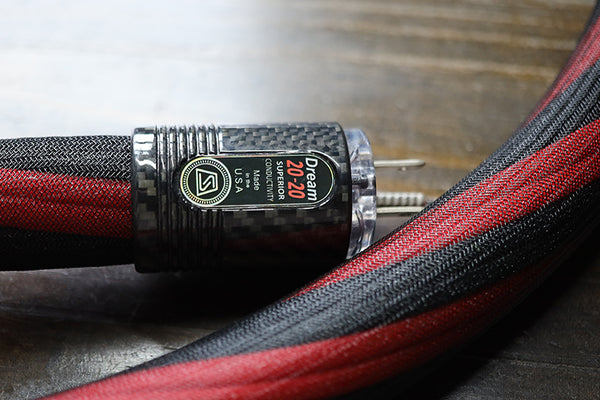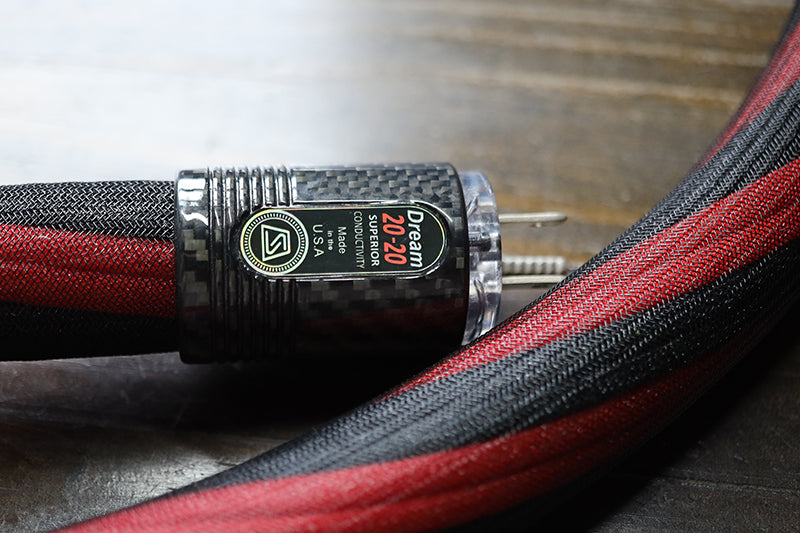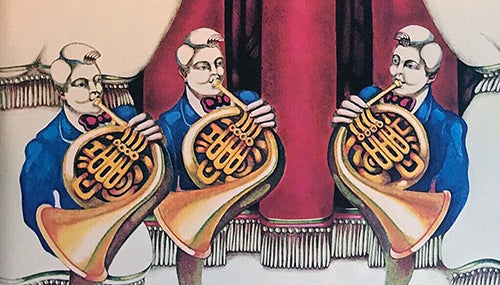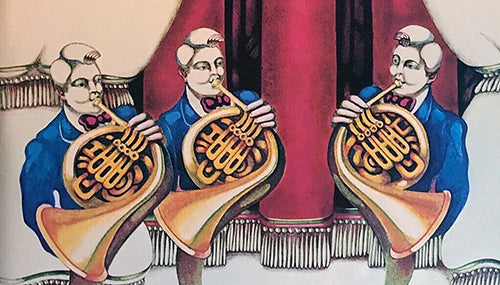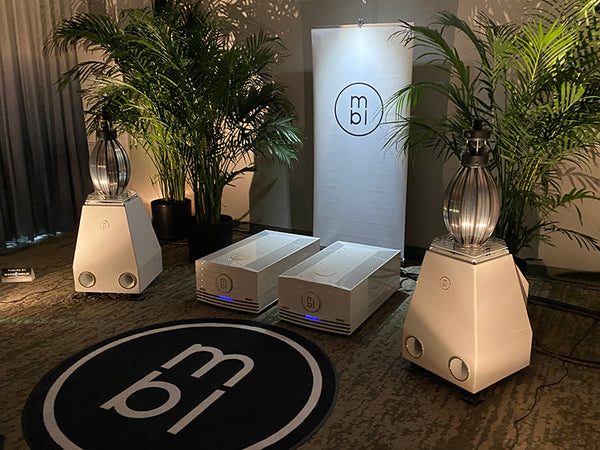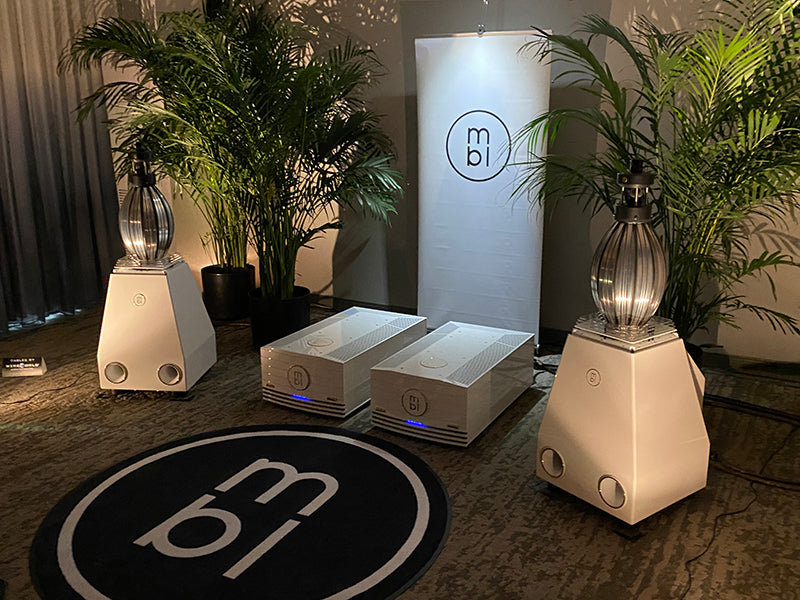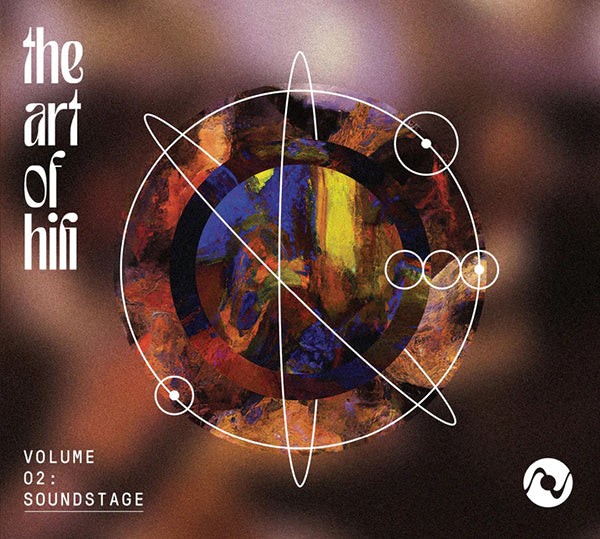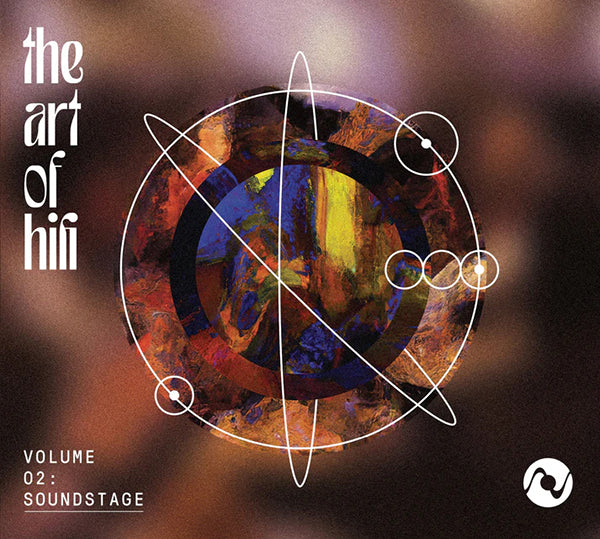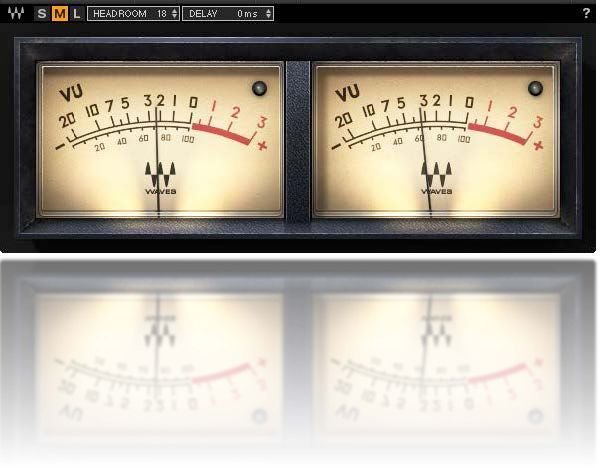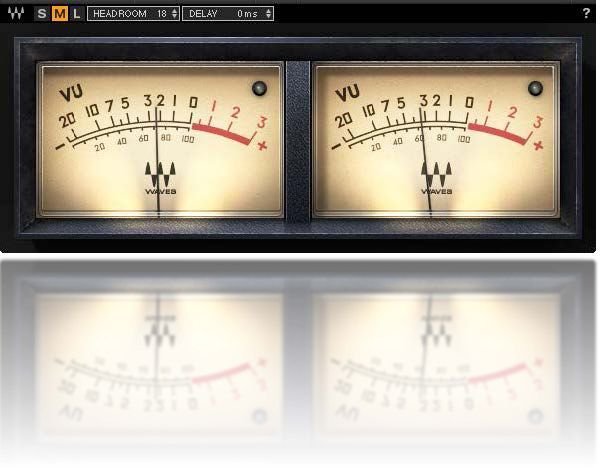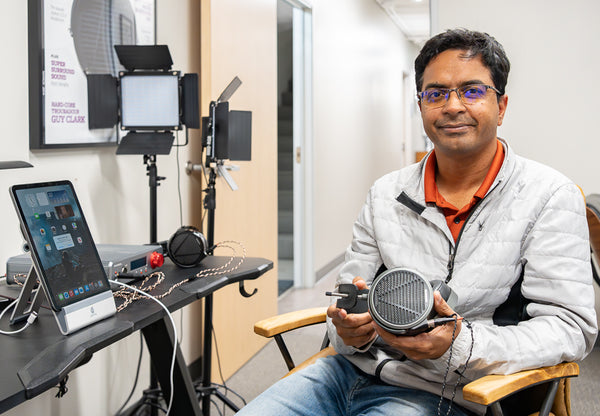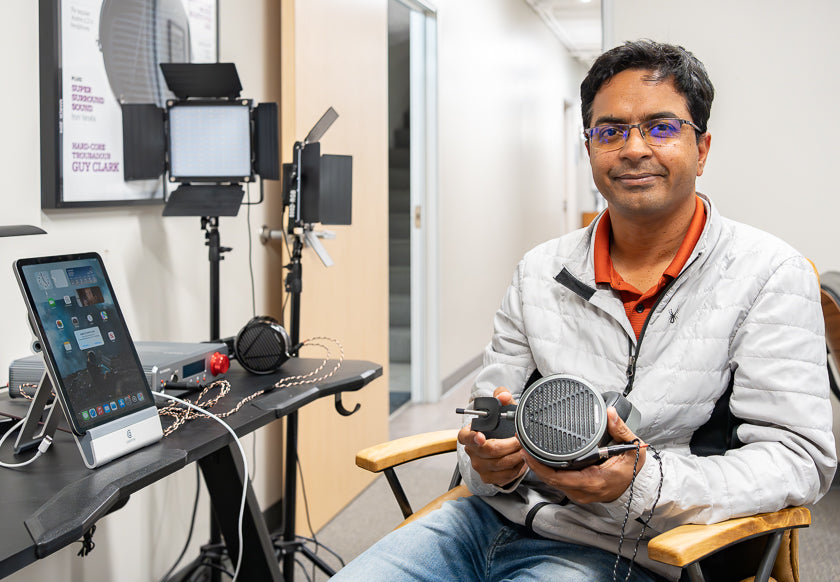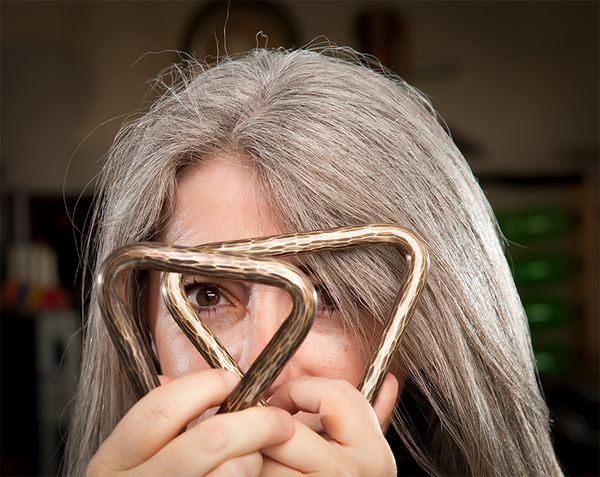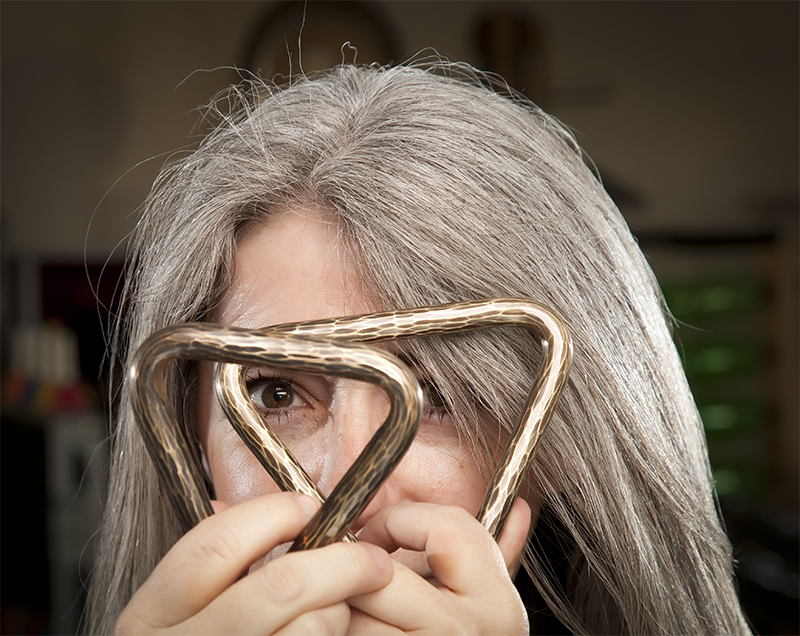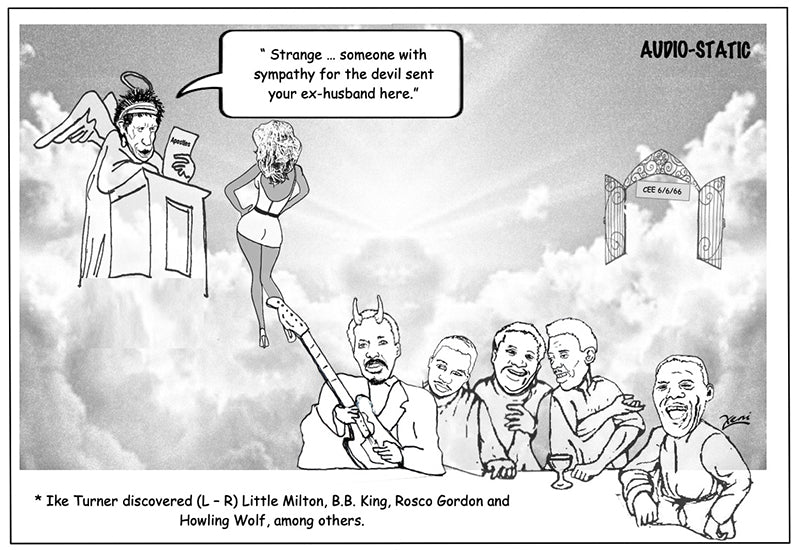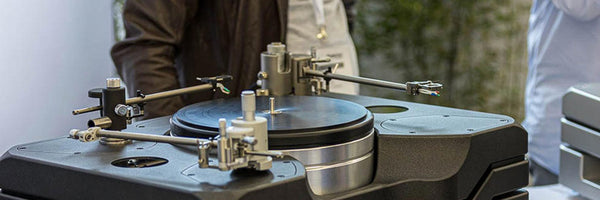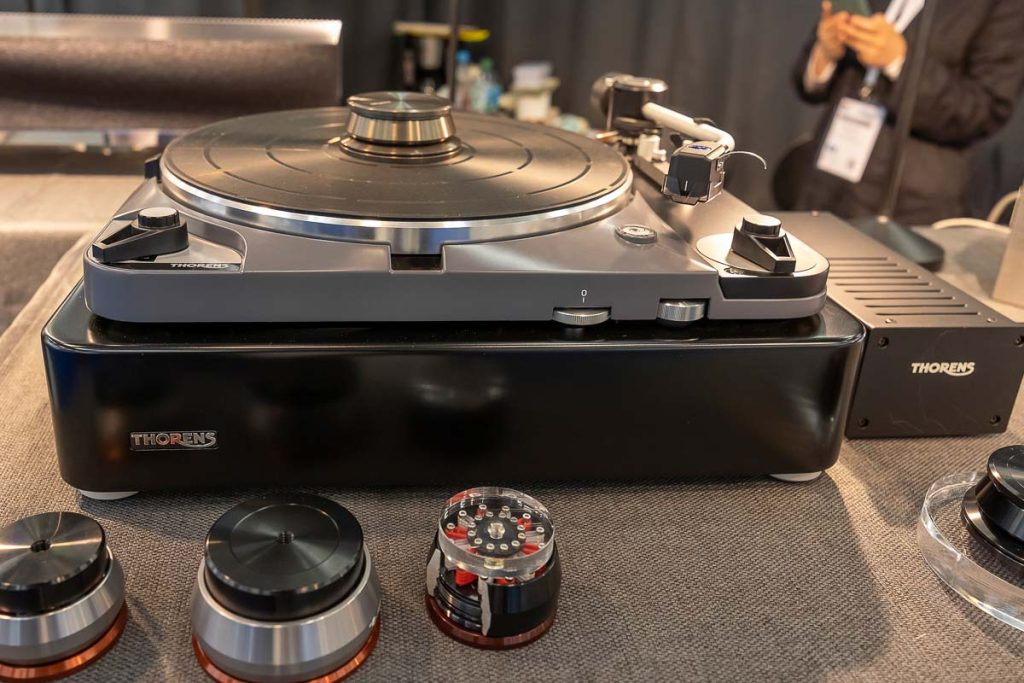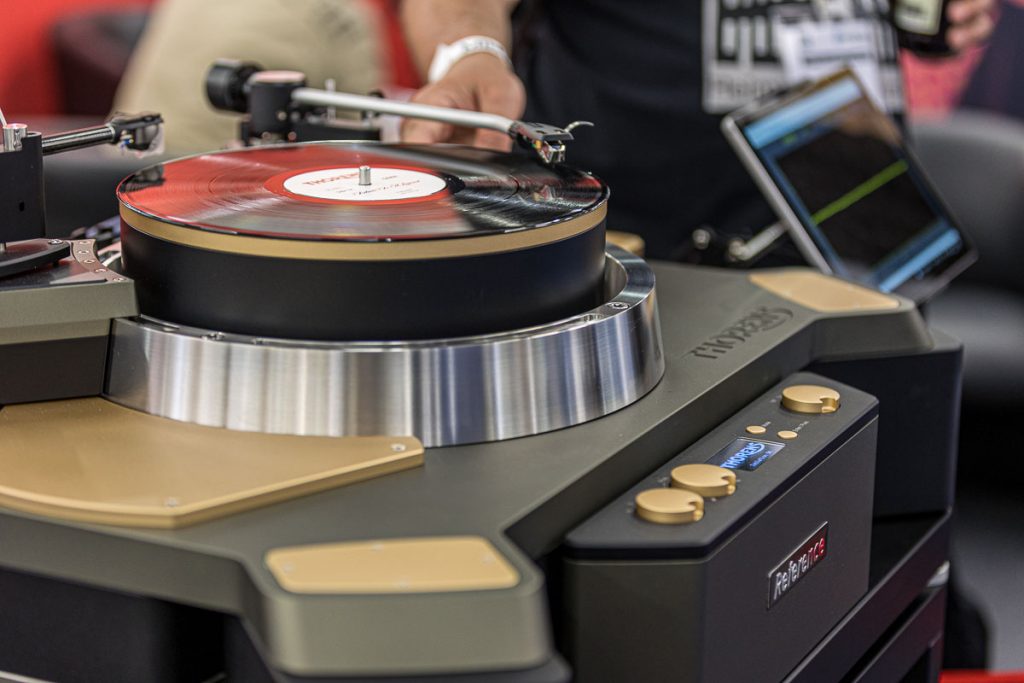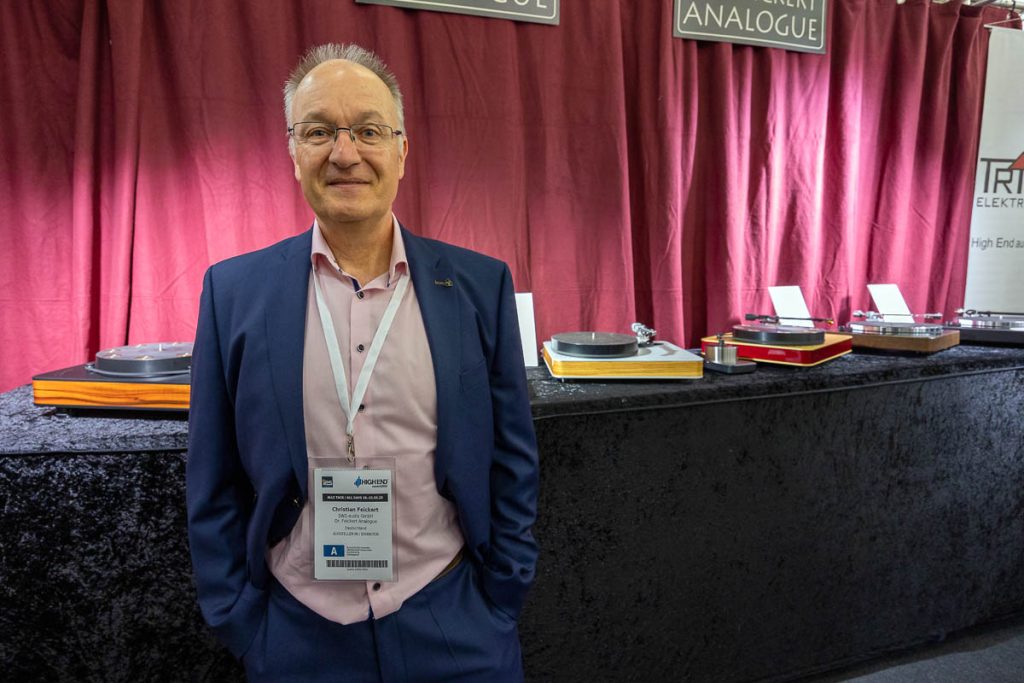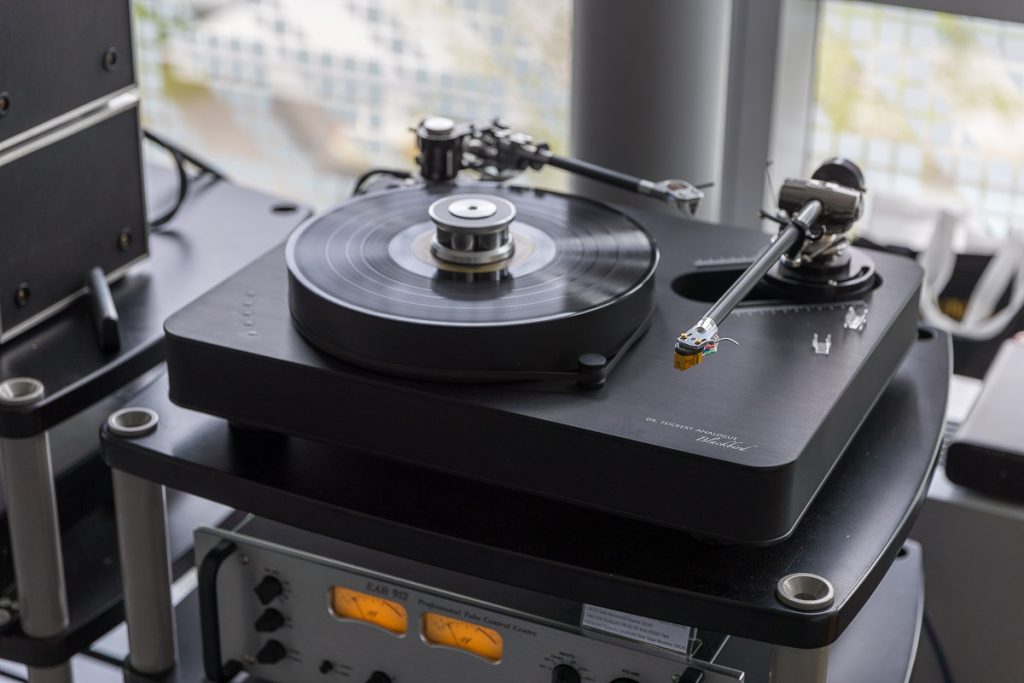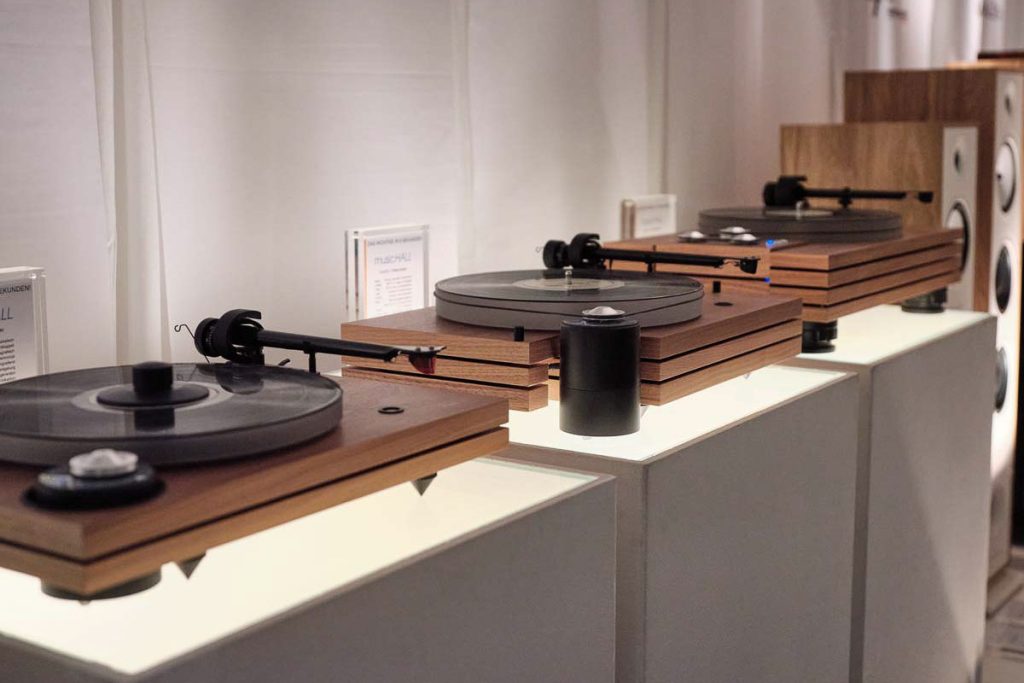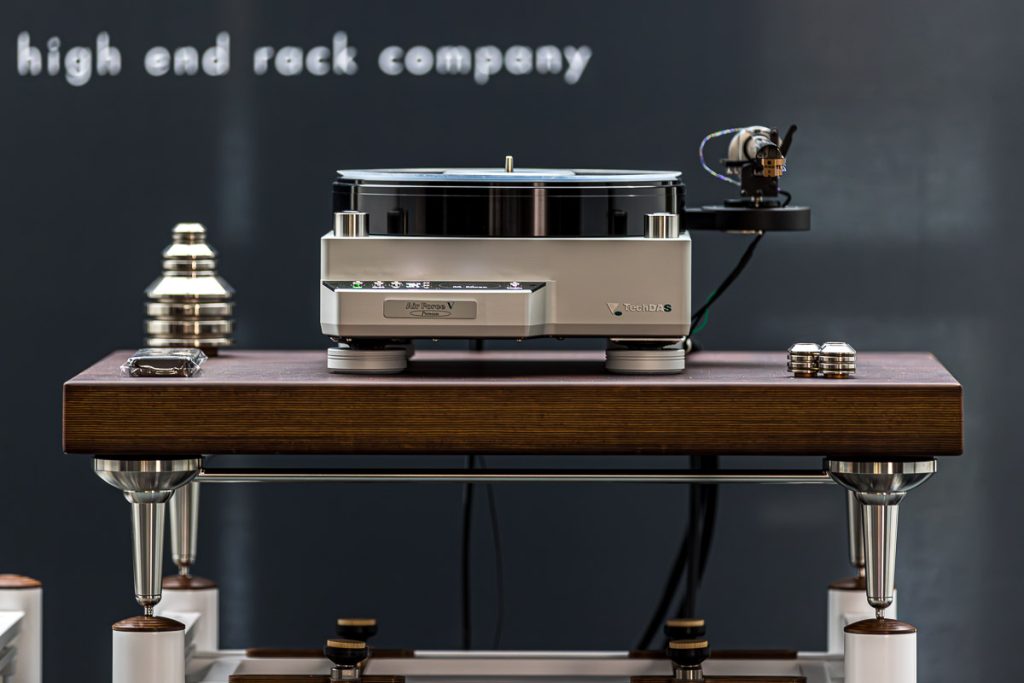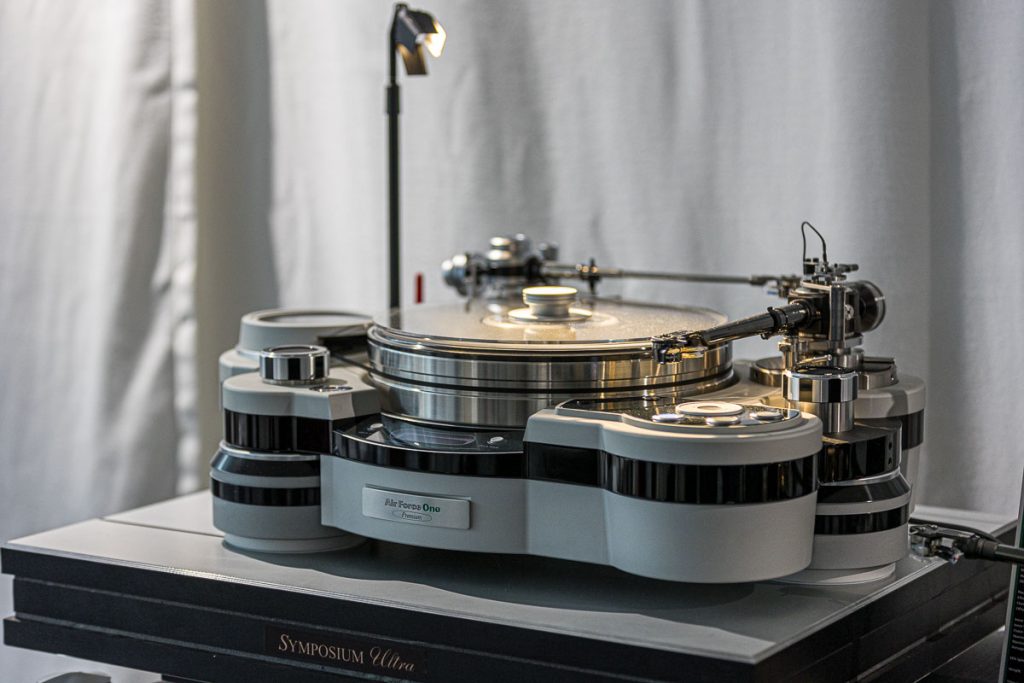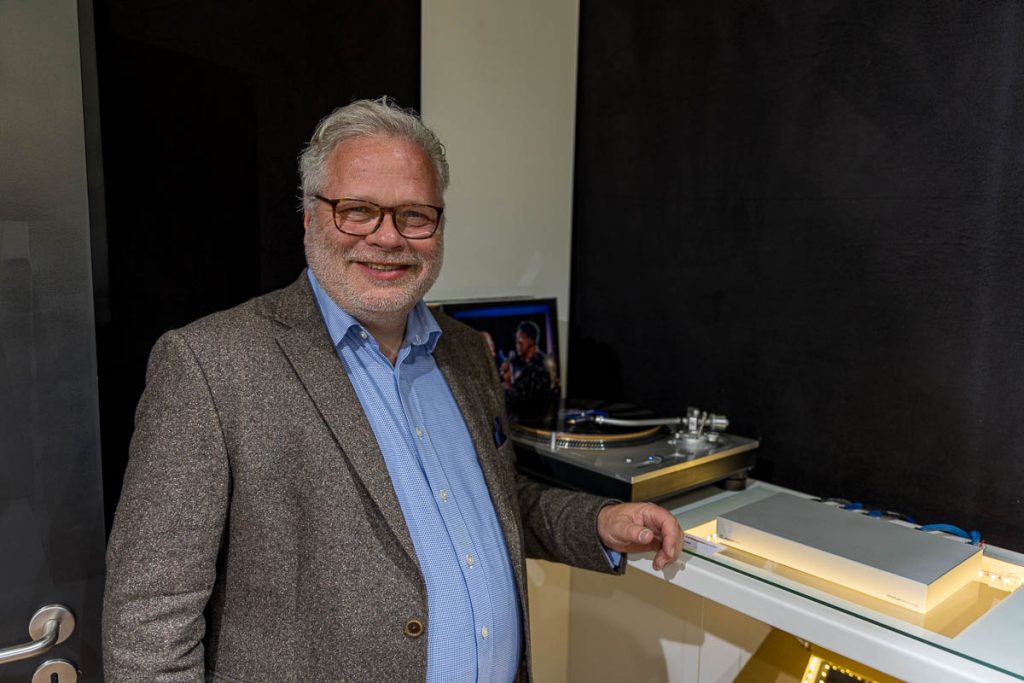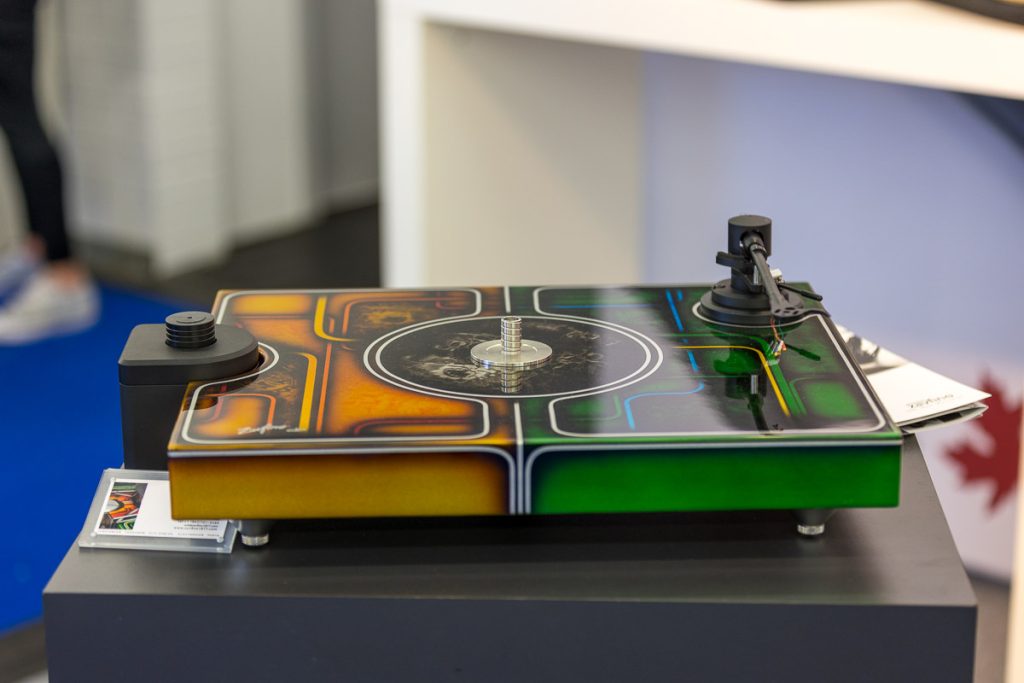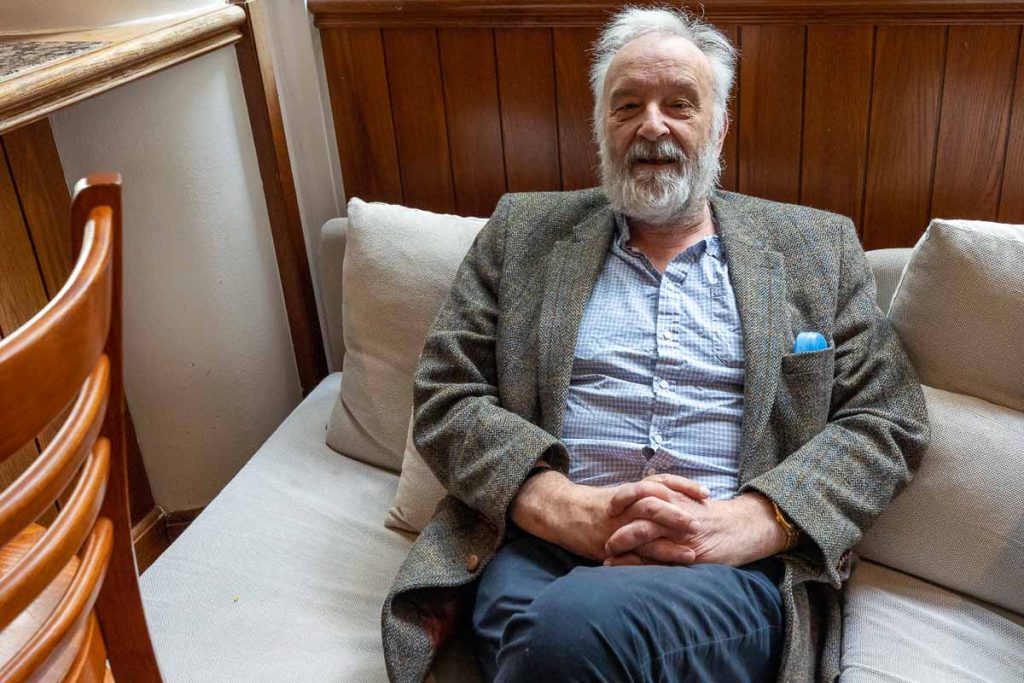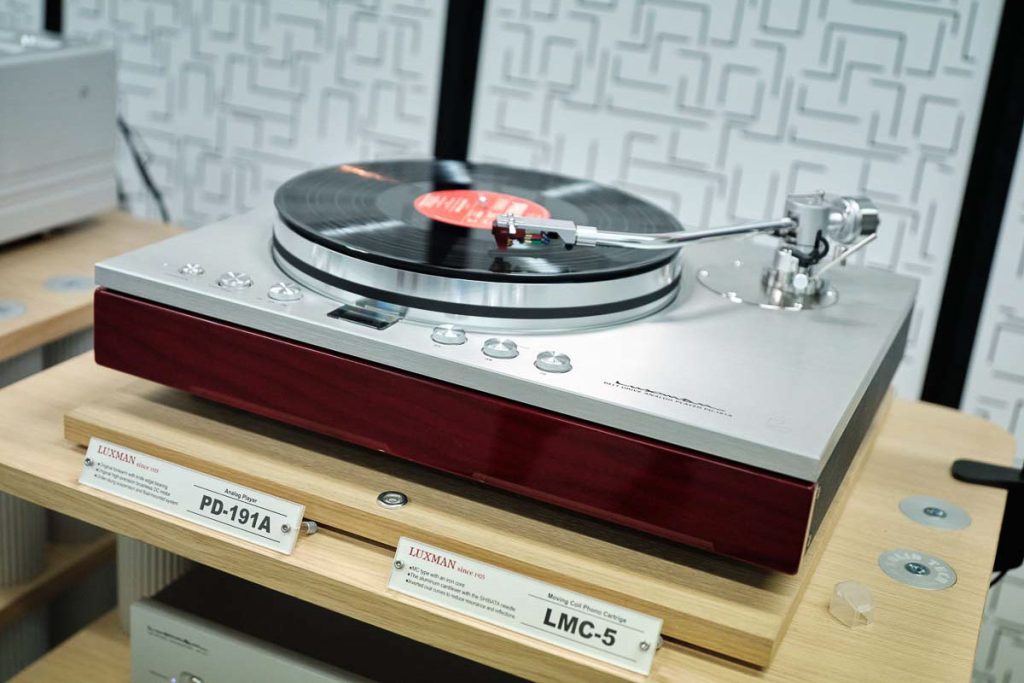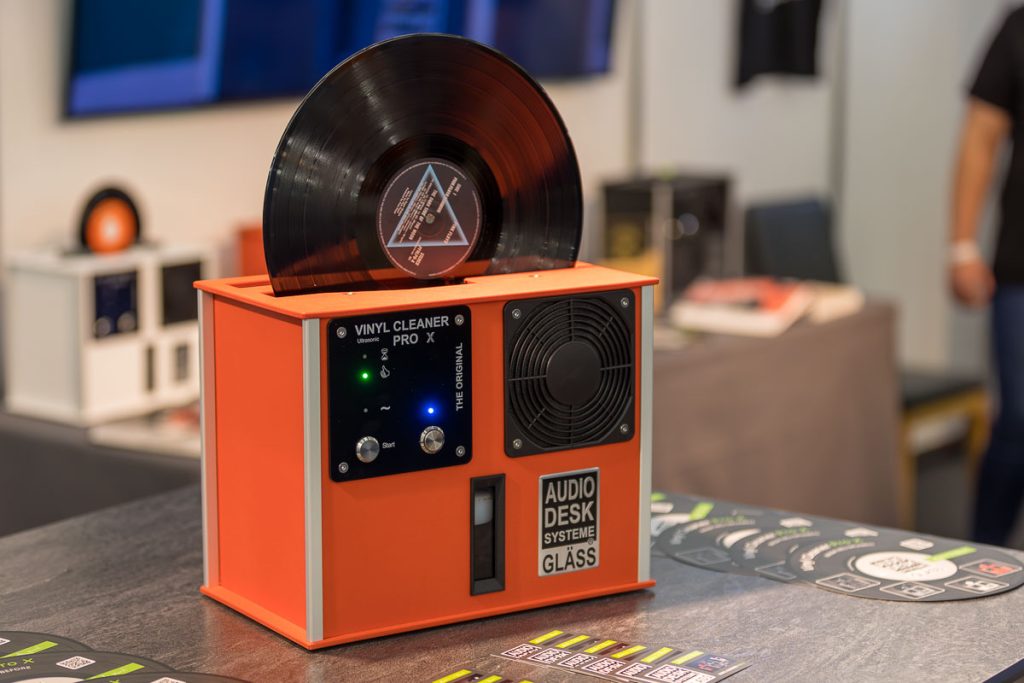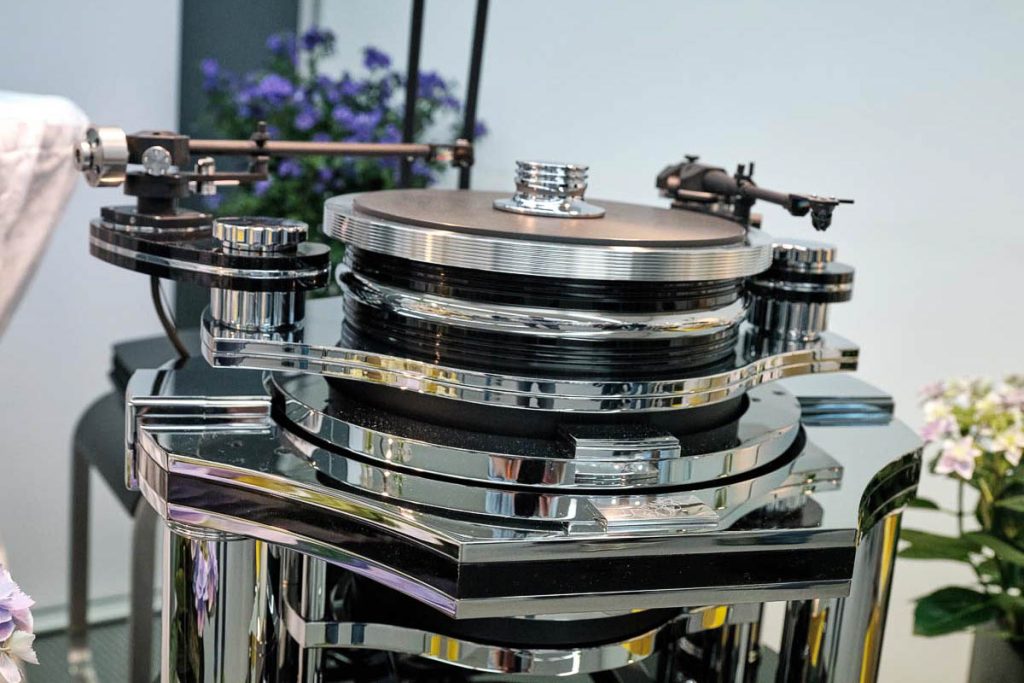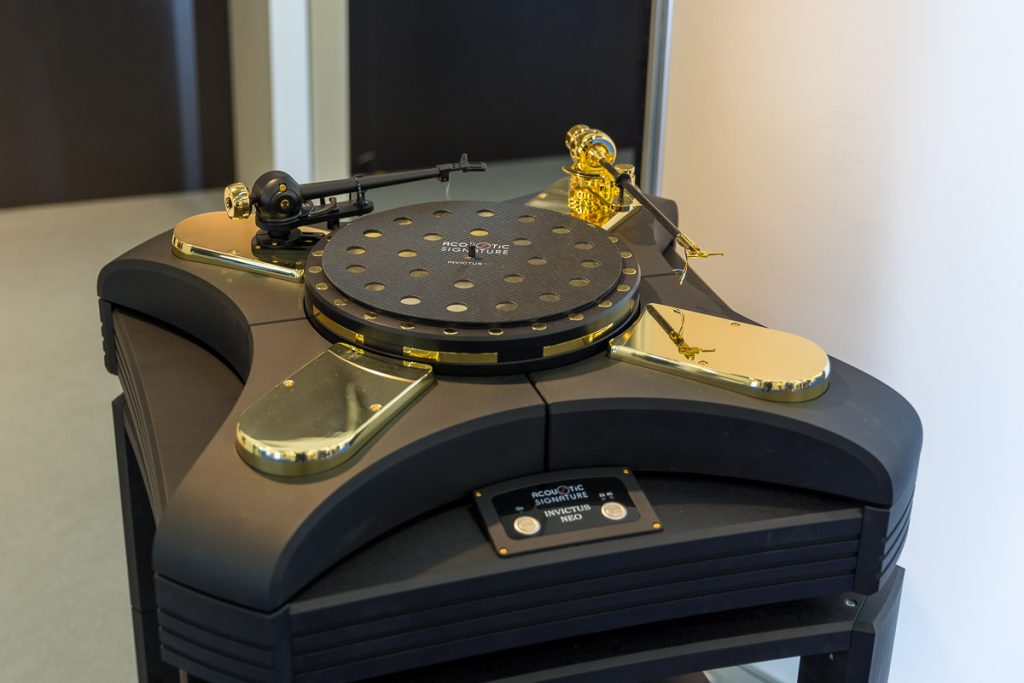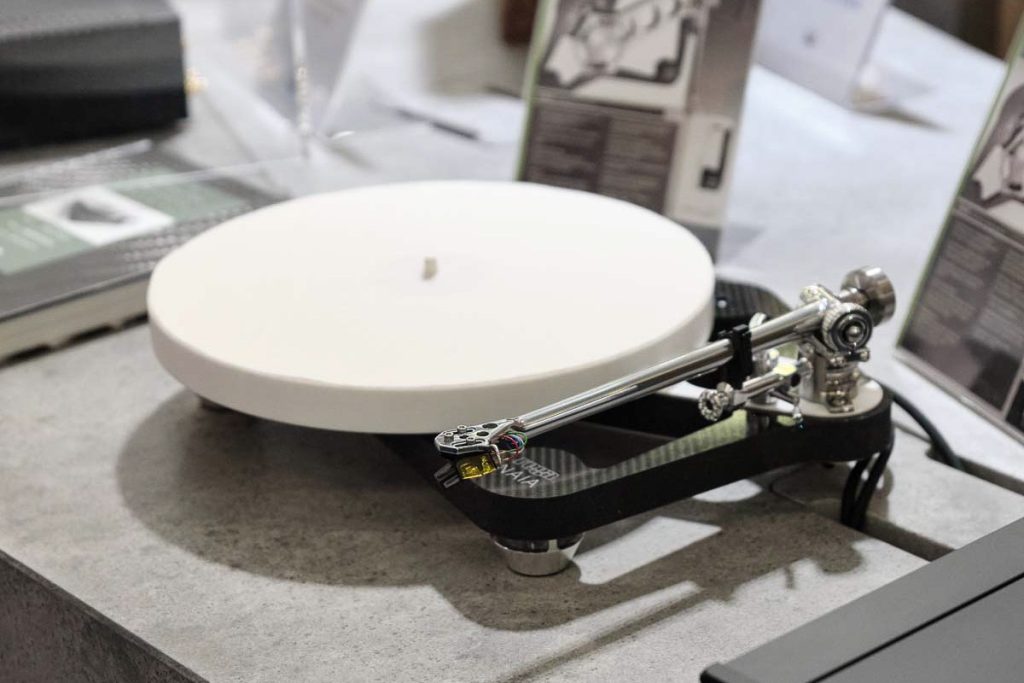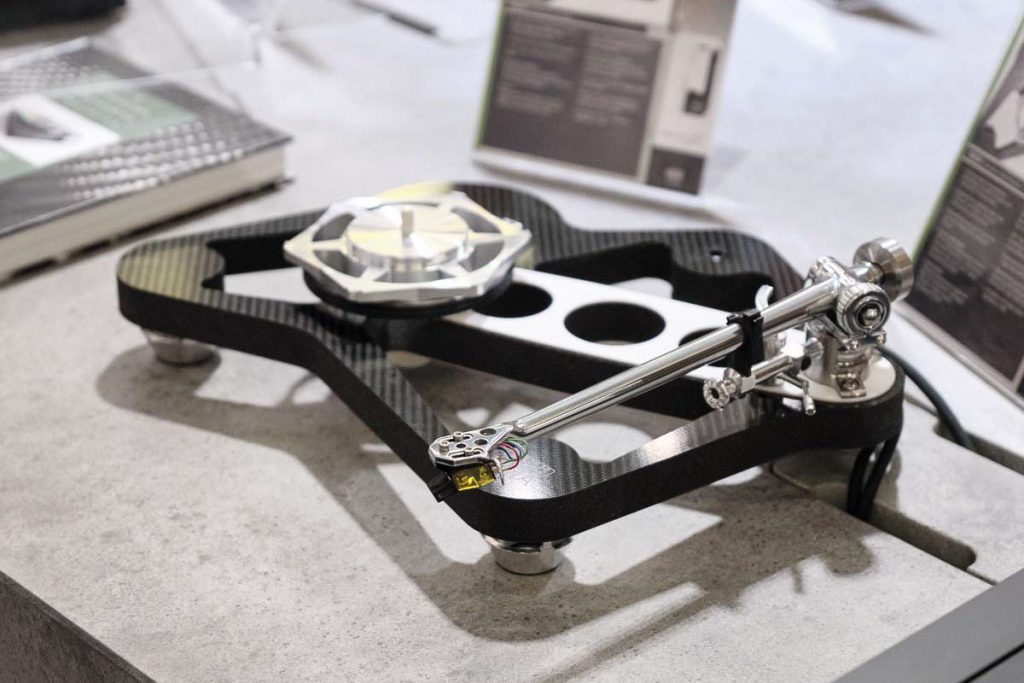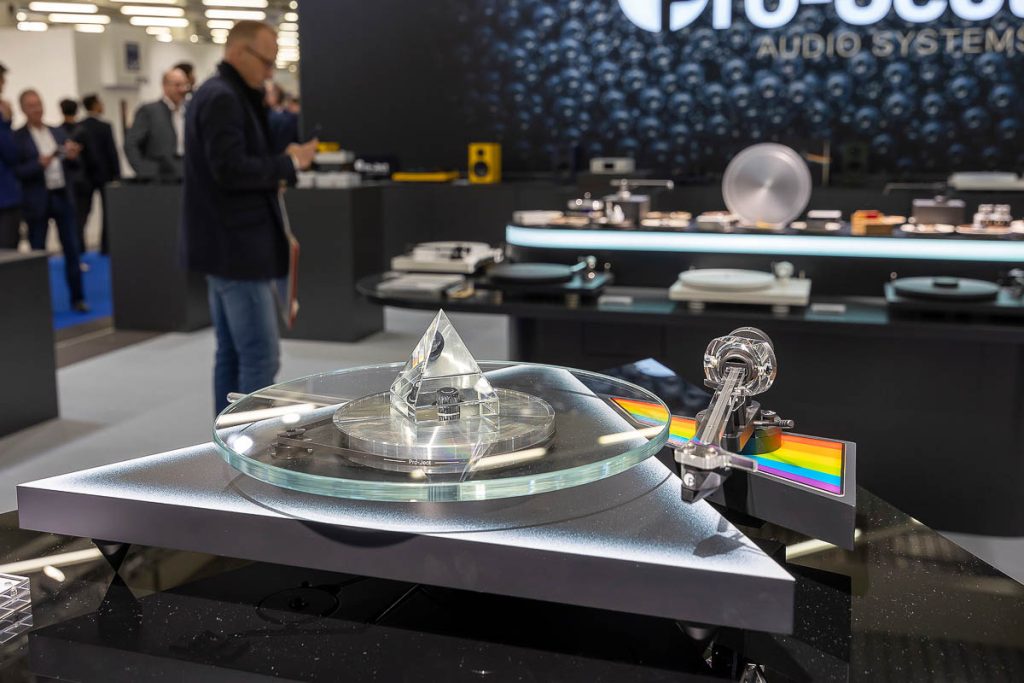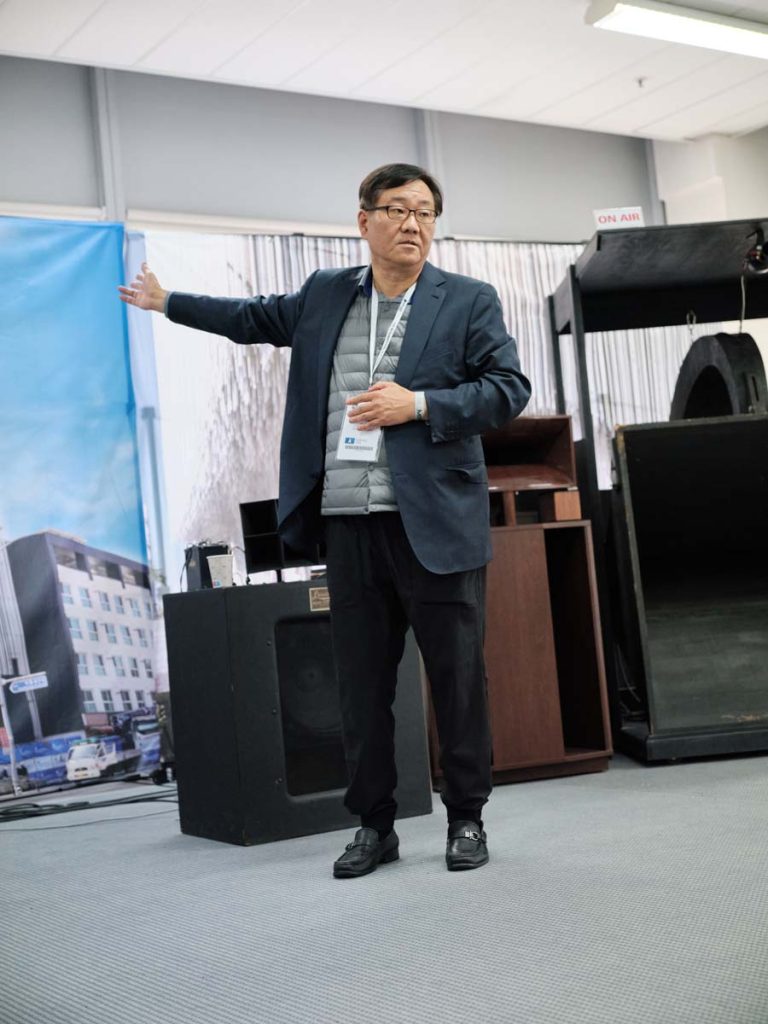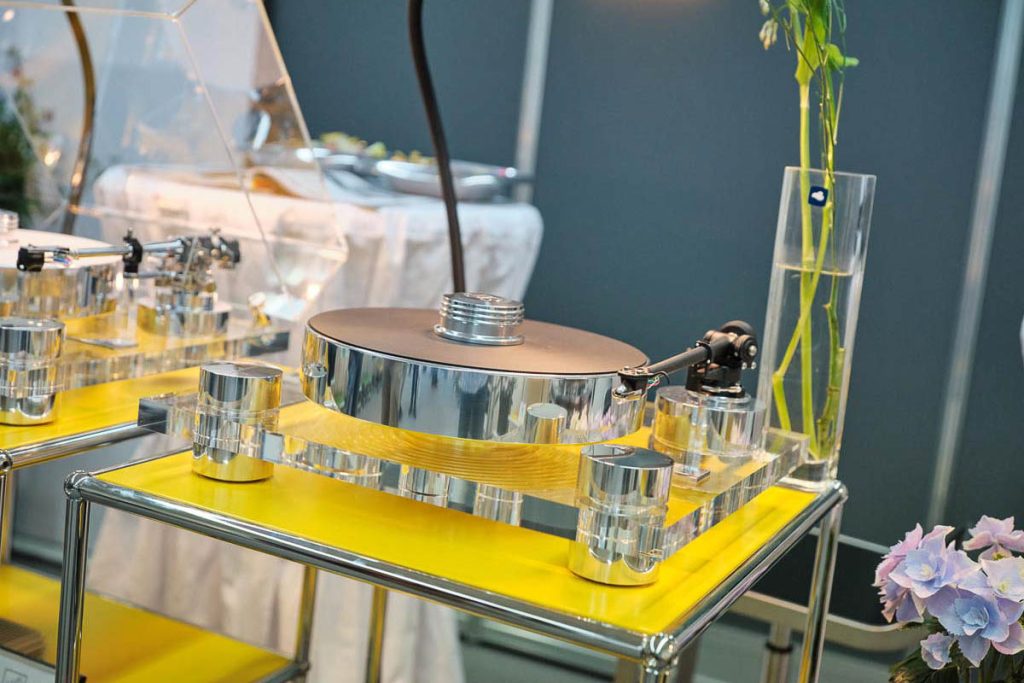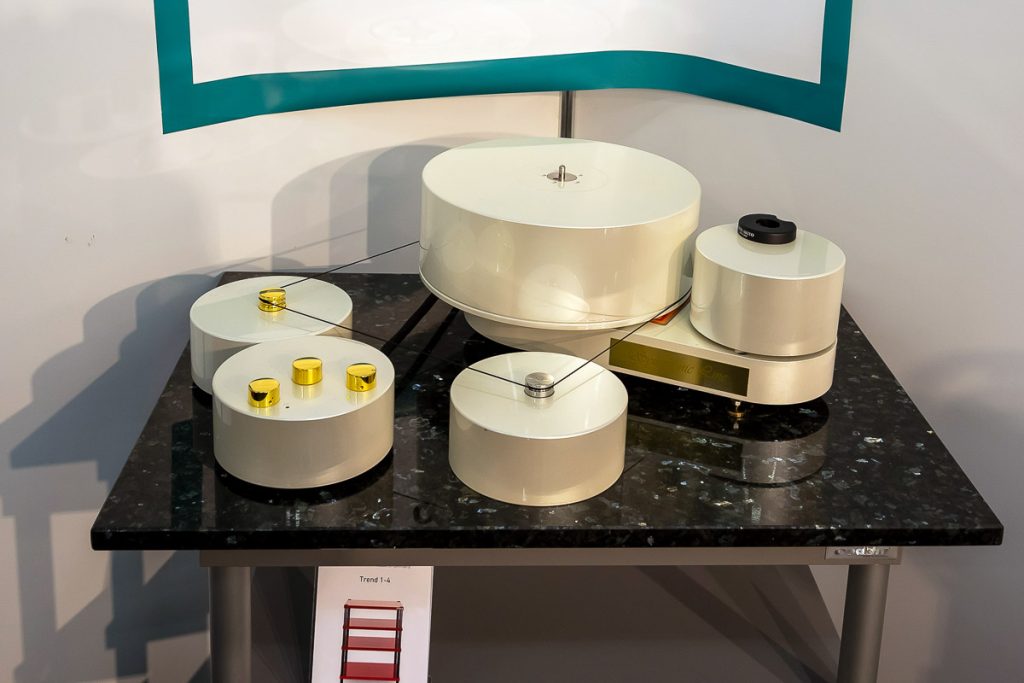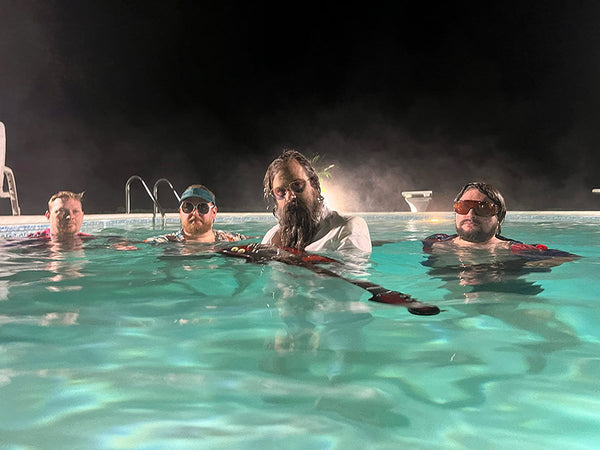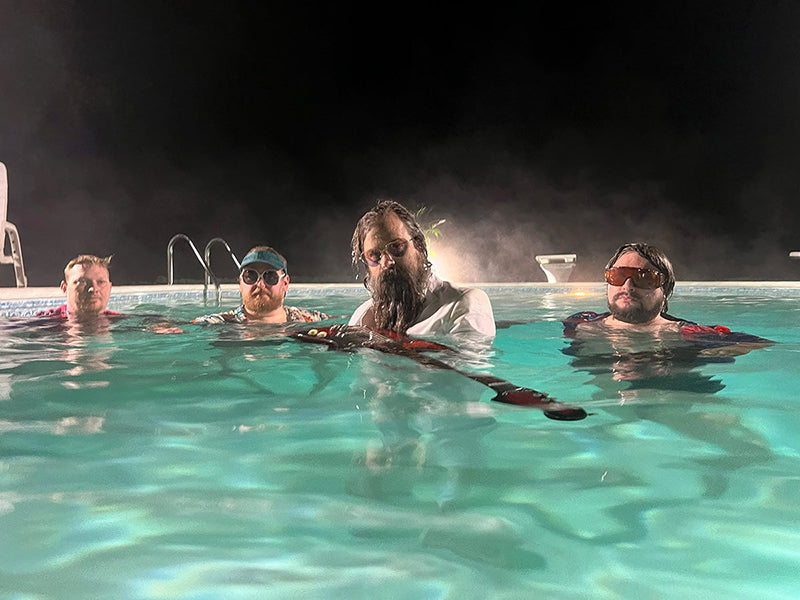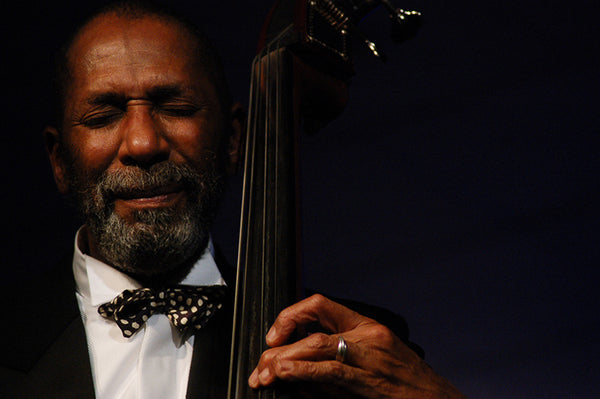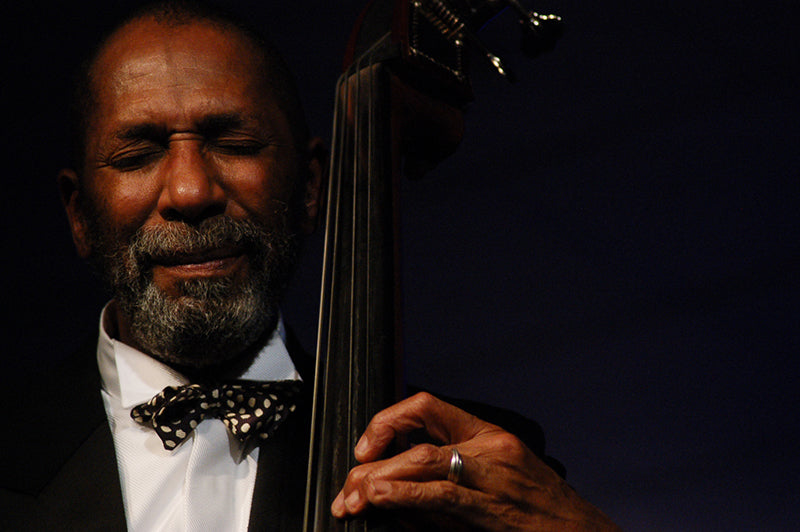If popularity is a sign of importance, one peek around the show floor at a CanJam, Capital Audiofest, or NAMM show makes clear how important headphones manufacturer Audeze has become. Over a relatively few years, they have become one of the best-known companies in audio. So devoted are Audeze fans, folks have full-sized tattoos of their headphones, pictures of which are often sent to the company. I first heard one of their planar magnetic models in 2014 at a Pepcom press event in New York City. It was their then-new and revolutionary EL-8, the first headphones on the market to have an Apple Lightning connection, complete with a DAC in the cable.
The EL-8 was launched just before the introduction of the iPhone 7, which was the first phone to drop the headphone jack. Forbes actually wrote an article saying that the EL-8 was proof that Apple was removing the jack. The rumor mill went into overdrive, but Audeze actually had no inside knowledge of that move. However, they were credited as being ahead of the curve, something that founder Sankar Thiagasamudram finds funny to this day. The real reason they created the Apple Lightning cable was that Audeze felt that Bluetooth wasn’t up to the necessary audio standards.
Audiophiles weren’t going to use Bluetooth as the chipsets weren’t up to snuff at that point, yet Audeze recognized they needed to attract new users. By using the Lightning port, they could showcase their headphones to audiophiles, with no hit on the audio quality. It was purely serendipitous that Apple subsequently dropped the headphone jack, which was great news to Audeze, who was struggling to get the word out about their company, which had its beginnings in 2008.
The EL-8 was unlike any headphones I’d ever seen. They didn’t look like earlier Audeze models, which my wife Nancy thought resembled waffles on the sides of your head – a decidedly un-sexy look. By comparison, the EL-8 were gorgeous and sleek, designed in collaboration with BMW. Plus, they had that crazy new Audeze Cipher Lightning Cable with integrated DAC and amplifier.
Even though the first years of Audeze were like more of a hobby, in 2014 they were poised to make it a real company. The sound of their headphones was open and clean, with the fastest response I’d ever heard. There were only three companies I knew at the time who were making that sort of planar magnetic driver, the others being Fostex, and HIFIMAN. (Copper’s John Seetoo interviewed HIFIMAN founder Dr. Fang Bian in Issue 137.) Now of course there are scores of folks who have jumped on the planar bandwagon, but at that time there were two pioneers in the consumer audiophile space, with Audeze being one of them.
Planars weren’t unheard of. Yamaha had planar magnetic-driver headphones in the 1970s, but they didn’t take off. Fostex later came out with both a planar microphone and headphones, which users loved to modify, and that are still manufactured to this day. (On a side note, Mark Cohen was then VP of sales for Fostex, later joining Audeze in 2013. When it seems that everyone in audio knows each other, it’s not just a perception.)
On a personal level, I’ve gotten to know co-founder Sankar Thiagasamudram, which has been an unexpected pleasure. I feel I have a better understanding of what drives him, as well as what Audeze is trying to accomplish. Spending time talking with him is immensely enjoyable and our conversations veer from subject to subject as hours slip by.
Sankar Thiagasamudram in the Audeze offices.
The thing about thinking about audio reproduction is that it sometimes requires non-linear thinking. Successful audio engineers and innovators often bring a wide variety of questions and pursuits to the table. Listener psychology, fit and finish, aesthetics, perceived value, engineering, pride of ownership – every consideration – everything is on the table during the creation of a new product.
It’s not just market forces that compel companies to continually introduce snazzy new products; for serious companies it’s about making sure that refinements to their products consist of more than a new logo or color scheme. One gets a sense there is a certain joy in the “what if we tried this?” ethos that’s in the air at Audeze. Sankar is keenly aware of the competition, and in what differentiates their products from others. He also has an ear on future trends. One of those trends is the trickle-down theory as applied to audio, maybe the only example of trickle-down theory that has actually proven to work. In audio as in technology, what were once found in incredibly expensive products have become more affordable.
While Audeze has headphones that sell for thousands of dollars, among their most eagerly-awaited models are those that will sell for a few hundred dollars, such as the upcoming Manny Marroquin-inspired MM-100 planar magnetic headphones set to retail for $399, or the Maxwell planar magnetic wireless gaming headset at $299. (Marroquin is a multiple-Grammy-award-winning mixing engineer.) Sankar promised a loaner set of the MM-100 so I can compare them to their more expensive audiophile parent, the MM-500. In my initial listening to the MM-100, audio trickle-down is alive and well, as the MM-100 and Maxwell were both seriously good-sounding headphones. One of my favorite Audeze headphones is the company’s older LCD-1, which were also only 399 bucks, and the MM-100 is its replacement. I just love listening to the LCD-1s. They were like a great, but not fancy or expensive bourbon, and being smaller and lighter, I often took them traveling.
From the MM-100 to the top-of-the-line $4,500 CRBN electrostatic headphones, every single driver used in Audeze headphones is born right here in their factory. Over the past couple of years Sankar had invited me to visit him at their facility in Santa Ana, California, and finally I was able to take him up on his offer. Audeze’s home is an unprepossessing commercial building, a few minutes from the 55 freeway, which is one of the busiest roadways in California.
When I got to the building, I couldn’t figure out a way in. The front door was blocked with two large steel- and concrete-filled security barriers. Eventually I remembered that the entrance was on the side near the parking lot. There was indeed a door, next to a Tesla happily charging away.
I found Sankar, busy on a phone call. He gestured that it was OK to wander around. It was later in the afternoon so the factory was pretty quiet, but there were still folks working, so I had a chance to peek at this, peek at that, and view different products in every state of completion. Sankar found me, and apologized for me having to go in the side door. It turns out there was a very good reason the security barriers were there, which was to prevent “smash and grab” robberies through the glass front of the building. I’m going to digress a little here, but it’s to address some issues that readers may not be aware of, which is that the industry is affected by crime and the theft of intellectual property.
As an example, in 2016, someone backed up a van to Audeze’s loading dock with so much force, it knocked down the actual metal frame of the entire loading dock, which as it fell totaled Mark Cohen’s new Mercedes SL550, which he had parked inside the dock to keep it safe while he attended the 2016 CanJam New York. The thieves went on to steal several pallets of completed headphones. I was amazed. I mean, we were minutes from John Wayne Airport, Irvine, and Costa Mesa, and Lido Isle and Newport Beach are only a few miles away. Audeze was located in an everyday commercial business park. Seriously, robbery? Criminal gangs?
Sankar, who was telling me the story after he’d gotten off the phone, looked at me and said, “No, it’s not a joke, this is absolutely real.”
We both walked over to a metal door with a small 1-inch hole in it, covered with tape. A few feet away was a three-foot-square patch over another hole. He told me a story of how a gang from Fresno, (where there recently had been a huge bust of drug cartel members in scores of houses) drove down to burgle a Sephora, which they did by stealing a van stocked with new merchandise, and afterwards targeted Audeze. Why? There are no headphone-sniffing dogs yet, Audeze is a known high-end luxury brand, and headphones are small, easy to move, and in high demand. So, the small hole was drilled by the gang, and they had inserted a flexible video camera to scope out the area to spot any video cameras or motion sensors. These were well-equipped pros, so once they determined the coast was clear, they cut the access hole in the metal door and went in.
Sankar pointing out the hole that burglars drilled to insert an endoscopic video camera.
Unfortunately for their dastardly plans, they didn’t notice a motion sensor directly over the door, and when they entered the alarms went off, so they grabbed a handful of headphones and took flight. Amazingly, the gang were caught by the California Highway Patrol, as the van’s license number had been captured on security cameras during the Sephora heist, and they nailed the crooks. It was kind of surreal, even though I suppose Audeze could take this as a backhanded black humor kind of compliment. Sankar explained they had lost entire pallets of headphones from three different robberies, hence the barriers and increased security.
The panel that burglars cut out of the metal door to avoid triggering the contact sensors.
He discussed another threat to his company and the industry in general. It’s a scam where buyers purchase real Audeze headphones, open the box, and replace them with cheesy, obviously fake counterfeit knockoffs. Then the scammers return the headphones to Amazon, which are then sent to Audeze. The scammer gets the real headphones, Audeze gets a fake pair in return, and the money’s already been refunded to the scammer by Amazon. This is not unique to Audeze, it’s widespread and other companies have similar problems.
Another problem is companies who basically pick and choose bits of existing products, manufacture a new product based on ripped-off technology, and undercut the real companies. What irks so many manufacturers are the reviewers and consumers who don’t recognize that some of these products aren’t the sellers’ inventions, but taken from the original companies’ hard-earned tech. To attack this problem, Amazon has created its Anti-Counterfeiting Exchange (https://brandservices.amazon.com/anticounterfeitingexchange).
All that aside, touring the Audeze factory was a great experience. The employees I met were friendly and happy to show me around, and show off what they were working on. I learned that there are several families with multiple members and relatives at the company. One extremely interesting aspect was seeing driver diaphragms created from carbon nanotubes impregnated on an impossibly thin, feather-light driver film, light enough to float in the air. Talk about a low-mass, fast-response material! One of the advantages of using carbon nanotube technology is that the material is non-ferrous, meaning it’s safe for use in an MRI machine. Audeze has been working with the UCLA SEMEL Institute for Neuroscience and Human Behavior to develop headphones that will provide noise reduction as well as the ability to listen to music while enduring an MRI. Having had several MRIs myself, I really hope this makes it to market soon.

Sankar holding up the ultra-thin and lightweight conductive film with carbon nanotubes embedded inside the film used in their CRBN headphones. It is probably the thinnest film in a production headphone or microphone.
To demonstrate how lightweight the carbon nanotube-embedded film is, Sankar watches as the film floats in the air.
Sankar showing the CRBN electrostatic diaphragm assembly.
Patricia “Feny” Quintero measuring drivers for quality control.
Milca Santana holding a laser-etched driver.
Santana holding a completed driver for testing.
Custom-built machine (a modified 3D printer) for assembling Maxwell headphones.
Christian Quintero testing etched driver film. And yes, Patricia "Feny" Quintero is his sister!
Hanh Thong Nguyen performing preliminary driver matching.
At each step of manufacturing at Audeze were quality control stations where each driver was tested, over and over. It really amazed me that Audeze can produces the amount of product it does. In fact, Audeze is one of the largest producers of flexible printed circuit boards (PCBs) in the country. Also, rather than using acid etching, a toxic process, to make the circuit traces for their PCBs, Audeze has patented an entirely different approach, using high-powered specialty lasers to etch the films, thus ensuring drivers with an extremely high degree of consistency. Every driver, from the lowest- to the highest-priced, is made using this process. (Every Audeze driver goes through the same quality control process, but the ones designed for their lower-cost headphones are sent overseas for assembly into finished products.) The more expensive Audeze lines are completely built in the US.
Jose Perez, team lead for PCB etching, with Sankar.
Driver parts waiting for assembly.
Maria Matilde Koerber performing final visual quality control checks.
Sankar in front of the vacuum deposition chamber, showing an example of 0.5-micron copper deposited onto a 1.6-micron film.
If you want to use a vacuum chamber, plan on supplying some specialized gases for it.
On display were scores of gorgeous wooden frames, head-frame assemblies, cables, rivets, earpads, and other parts. The new Manny Marroquin-inspired MM-500 planar magnetic headphones that I’m currently reviewing were built right here in the USA. They are quite simply fantastic headphones. Personally, I think they should be heard by every audiophile and studio engineer.
I was also able to listen to their top-of-the-line CRBN electrostatic headphones, using a variety of amps in their listening room, and they are among the best headphones I’ve ever heard, a view shared by many other reviewers. Sankar asked if I’d be interested in trying them for a week, along with the new, inexpensive ($399) Topping EHA5 Electrostatic Headphone Amplifier. Audeze had just purchased an EHA5 for testing, in fact, the first one sold in the US from China. If there is an issue with electrostatic headphones it’s often the expensive and bulky amplifier needed to power them.
A box of gleaming golden goodness: wood rings for the LCD headphones. Manufactured in Oxnard, CA, they are ready for assembly.
This was one of the listening stations set up for the CRBN headphones, with an iPad using Qobuz, a Woo Audio ES8 headphone amp/preamp, and a Denafrips Terminator II DAC.
If Topping’s unit turns out to be good, it could be a game changer for folks wishing to try that technology. The incredibly quick response of electrostatic diaphragms is a huge reason for electrostatic headphones’ devoted following, along with their light weight, which makes them a pleasure to wear for extended periods. The downside of course, are the large, expensive, and often heavy amplifiers needed to power them (for example, the HIFIMAN Jade II amplifier weighs 14.3 lbs.). And this is where it gets interesting. Due to the CRBN’s nanotube driver construction, the headphones can operate using a 200-volt power supply instead of the industry-standard 580 volts, thus opening the possibility of an entirely new generation of portable electrostatic headphones and amplifiers with Audeze leading the charge, high voltage pun intended. To date, Audeze hasn’t been able to find anyone interested in creating a new amplifier with the lower-voltage option, but hopefully it will happen.

Wonder where Audeze headphones get burned in? Right here. They are subjected to another round of quality control after burn in, to ensure they meet specs.
Audeze products ready for shipping.
I think everyone who is serious about their audio gear should have the opportunity to visit the manufacturer. It’s enlightening to see how many different and often unique parts are required for what might seem at first glance to be a not-too-complex final product. The chain of events required to design, prototype, source, create, test, assemble, test again, and make sure the fit and finish are perfect is incredibly complicated. There is a great deal of custom-built and specialized “invented here” tools, templates, jigs and fixtures and other hardware and processes required to manufacture a product that we might be quite blasé about, not realizing how many hardworking people, with supply chains all around the planet contributing, allow a product to emerge. To create and innovate new approaches also means figuring out how to turn an idea into an assembly line-ready creation. Watching the Audeze staff handcrafting and manufacturing every component was inspiring and humbling, especially knowing that their creations would soon be in use all over the globe.
For more information about Audeze, please visit https://www.audeze.com.
Audeze
3412 S. Susan St.
Santa Ana, California 92704
714-581-8010
support@audeze.com
Header image: Sankar Thiagasamudram pointing out a detail on a pair of MM-100 planar magnetic headphones, featuring a brushed aluminum body and magnesium grille. All images courtesy of the author.




